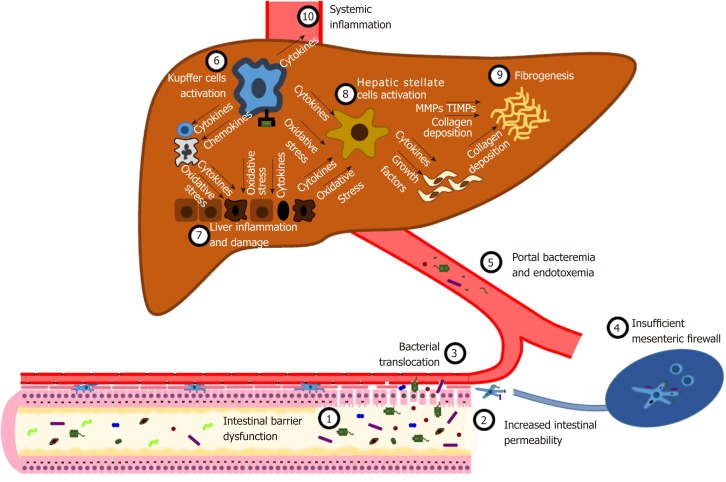Figure 2.
Intestinal permeability in the pathogenesis of liver damage. Several disorders, such as gut dysbiosis and primary and secondary intestinal diseases, can cause increased intestinal permeability. Consequently, viable bacteria and microbial- associated molecular patterns cross the intestinal epithelial barrier, a process known as bacterial translocation. An efficient immunological barrier limits this process, promoting a local immune response in activated mesenteric lymph nodes. When this primary firewall fails, microbes and microbial compounds reach the liver, where they activate Kupffer cells by binding Toll-like receptors. Kupffer cells orchestrate several processes, such as the release of inflammatory cytokines and reactive oxygen species, the recruitment of innate immune cells, the activation of hepatic stellate cells. The uncontrolled perpetuation of this pathogenic mechanism results in liver inflammation and damage, fibrogenesis and systemic inflammation. See text for further details.

